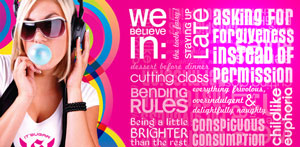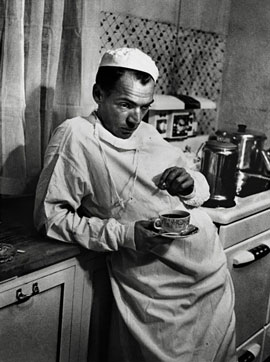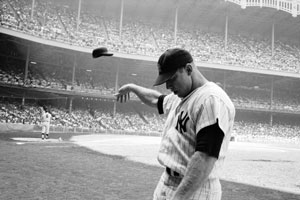There’s this ingenious marketing campaign by ingeniously named IT’SUGAR. The campaign is more than an eye-catcher. It’s a liberation theory. With one core phrase that looks like a variation of a good photographer’s mantra: “Shoot First. Ask later.”
IT’SUGAR loudly suggests:
Asking for forgiveness instead of permission.

A kind of like Nike’s “Just Do It” slogan.
Just do it. Don’t ask.
What I’m getting at?
Just shoot.
But first:
Much of the future of photography is in the software.
The average photographer is less and less the master over what (s)he’s trying to capture.
The inside of a modern camera reveals a highly complex arrangement of circuits. More and more these circuits make the picture that the photographer is trying to take.
What’s left for the photographer if in-camera software and image stabilization are able to salvage even the worst of shots?
Well, at least the framing and composition remains the responsibility of the photog. And that’s what photography is mostly about. Not the gear. But the reflex when to press that shutter button.

Shoot.
Good photographs are made in crucial split seconds. It’s a split second that decides over an amazing image or a mediocre one.
By waiting for the perfect moment many great images get lost forever. Knowing when to press the shutter button is a photographer’s basic, most important skill. Period.
Good photography is not only a matter of a fast, responsive camera and an instant reaction time. A developed photographic reflex is key to create better work.
As a photographer you’re freezing a moment in time. The more “hyperreality” you’re able to capture the richer the revealed reality is.
By freezing a moment the moment gets a second chance to be looked at. The blinking of an eye, a facial expression or an “accidental” passerby in the background may widen the perception and reveal a whole new dimension of that moment’s reality.
A split second earlier or later may have been too early or too late.
That’s what makes good photography. The ability of handling the camera in a way to capture the essence of a moment by freezing the most compelling movement and moment in time.
It seems to be a very simple decision to take a photo. It is not.
How often did you ask yourself if you should take a photo of this or that. And see, the moment was gone.
Happens all the time.
After much hesitation, by the time the camera is ready to shoot the image is lost.
Doesn’t mean you’re not asking a beggar for permission to make/take his photo.
Doesn’t mean everything is permitted.

Just get into the mindset of, yes, I shoot first and ask questions later.
Just shoot. Unless you take the chance in the first place you won’t get a second chance.
It goes without saying that you first must be able to master your gear. You know to correctly read the light and distance. You’re able to set exposure blindfolded.
But technique becomes secondary.
The very moment in time defies good photography.
To capture it you have to be ready.
Stop thinking too much.
Stop asking yourself for permission.
Just shoot.


